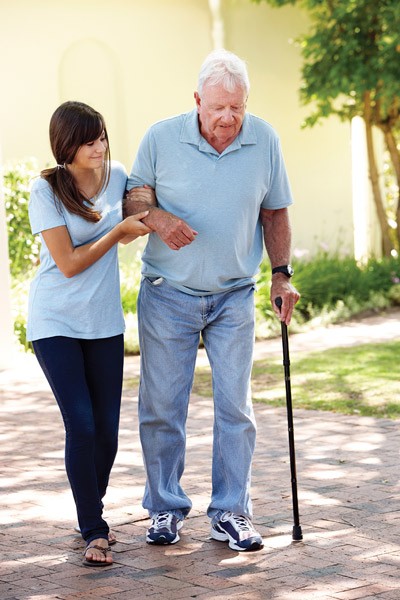Caring for a loved one who has had a stroke can be very taxing physically, mentally and emotionally. It’s almost unimaginable how a small blood clot or hemorrhage that interrupts or severs blood flow and oxygen to the brain can radically alter a person’s lifestyle.
One of the scariest things about strokes is that stroke victims rarely exhibit warning signs before a stroke occurs. These warning signs, rather, appear as the stroke is happening. The ability to detect a few key warning signs as soon as they appear can mean the difference between life and death.
Here are a few stroke symptoms to watch for:
- Numbness on one side of the face or body
- Difficulty speaking or walking
- Problems in maintaining balance
- Confusion or inability to understand others
- Sudden dizziness and/or severe headache
The faster your loved one receives medical attention, the less of an impact the stroke will have on their physical and mental abilities, and the better chances they will have of a facilitated recovery. Paralysis of the face, an inability to keep one’s arms level and slurred speech are all telltale signs that a person is or is about to have a stroke. The last point is perhaps the most important; a delayed response in medical attention could potentially lead to permanent disability.
What is the stroke survival rate for the elderly and how long does it take to recover?
The leading factor that affects a person’s stroke survival rate is how soon medical attention is administered; this cannot be stressed enough. How soon your loved one gets help will have a significant impact on whether they survive the stroke.
Stroke victims and their loved ones can hope for a full return to normalcy, but there are many factors that play a role as to whether this may be possible.
The Elderly and Stroke Recovery
The acute recovery phase begins almost immediately after the victim has been stabilized, typically 24 hours following the occurrence. Speech therapy is also a critical element of the initial recovery stage, especially if this is the part of the patient’s brain that has been affected most by the stroke.
Stroke rehabilitation for the aged will vary anyplace from some weeks to several years, relying once more on the individual’s personal circumstances. Caregivers setting, caregiver will play associate particularly vital role use within the current phases of recovery, point in time of healing, because it is common for older adults to expertise post-stroke depression. Billet -stroke depression. Guaranteeing they eat healthy foods, serving to mental object, portion them to precise their feelings flavor of frustration and joy, pleasure , and inspiring them to follow their set up for rehabilitation are a good support for them on their road to recovery.
Article Source: http://www.griswoldhomecare.com/blog/stroke-before-after-elderly/

